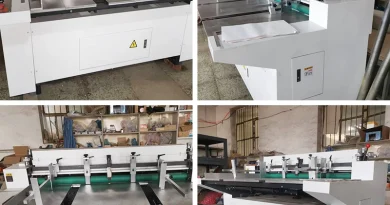Revolutionizing Packaging: The Impact of Advanced Cardboard Slitting Machinery on Industry Efficiency and Sustainability”
In the rapidly evolving packaging industry, cardboard slitting machinery stands as a key player, driving efficiency and innovation. This machinery, essential for cutting large sheets of cardboard into precise widths for further processing, has undergone significant advancements, embracing cutting-edge technologies to meet the growing demands for speed, accuracy, and flexibility in packaging production.
The integration of automation and robotics has been a game-changer for cardboard slitting operations. With these technologies, machines now operate with greater precision, reducing waste and optimizing material usage. Automated systems adjust cutting blades in real-time, catering to various cardboard thicknesses and sizes, ensuring that each slit is perfectly aligned with the project specifications. This not only improves the quality of the output but also significantly enhances production speed.
Moreover, the adoption of digital controls and touch screen interfaces has streamlined the operation of cardboard slitting machinery. Operators can easily set up and adjust machine parameters, making the transition between different production runs smoother and faster. This level of control and ease of use reduces downtime between jobs, allowing for a more efficient production process.
Sustainability has also become a critical focus, with manufacturers seeking ways to reduce their environmental impact. Modern cardboard slitting machinery incorporates energy-efficient motors and optimizes operations to minimize scrap, contributing to more sustainable production practices. Additionally, the ability to precisely slit cardboard reduces material waste, further enhancing the environmental credentials of the packaging production process.
The future of cardboard slitting machinery looks promising, with ongoing innovations aimed at improving machine intelligence, connectivity, and adaptability. The integration of the Internet of Things (IoT) promises real-time monitoring and predictive maintenance, potentially reducing unexpected downtimes and extending machinery life. Artificial Intelligence (AI) and machine learning algorithms could further refine cutting precision, adapting to various cardboard characteristics and detecting potential issues before they impact production.
As the packaging industry continues to grow and evolve, the role of cardboard slitting machinery becomes increasingly critical. Through technological advancements, these machines are set to continue improving production efficiency, product quality, and sustainability, ensuring that they remain an indispensable asset in the world of packaging.



